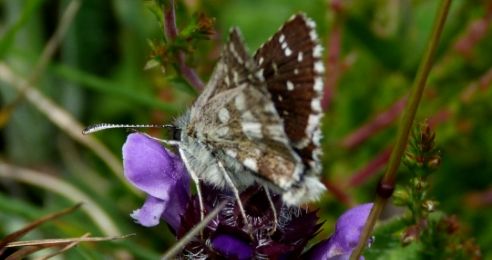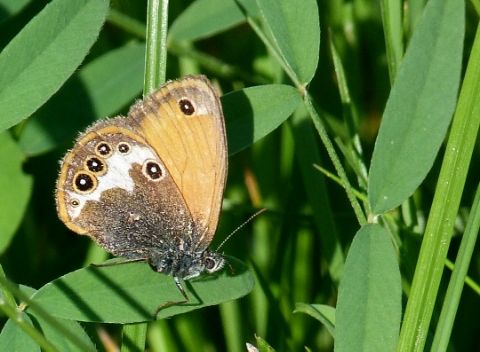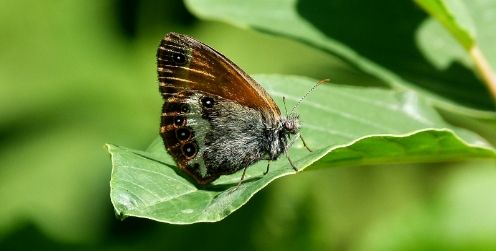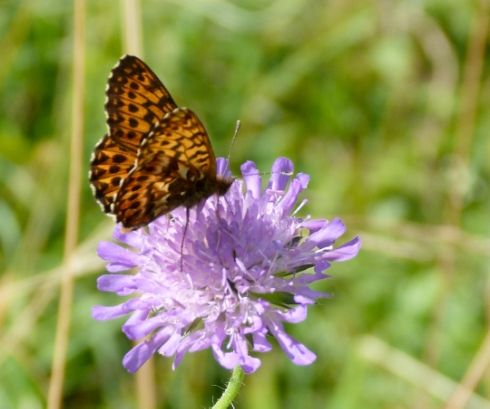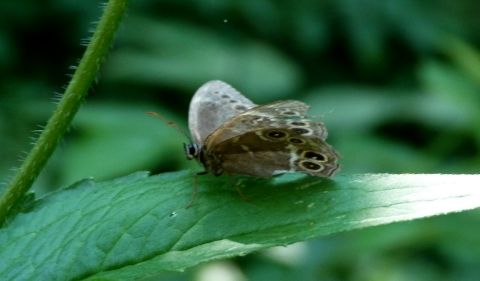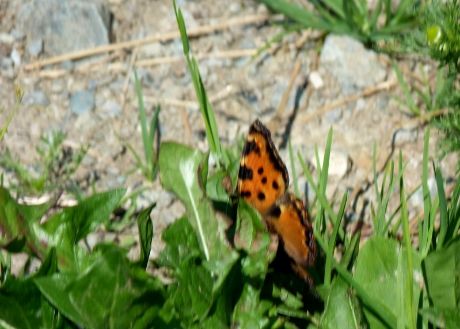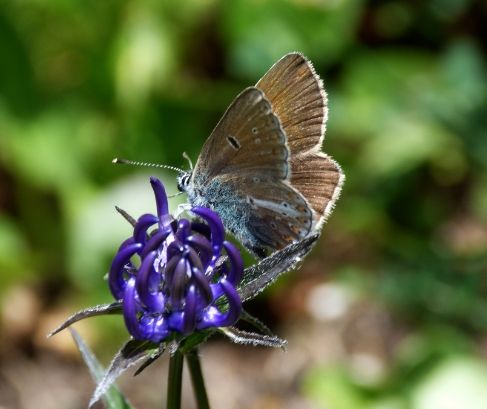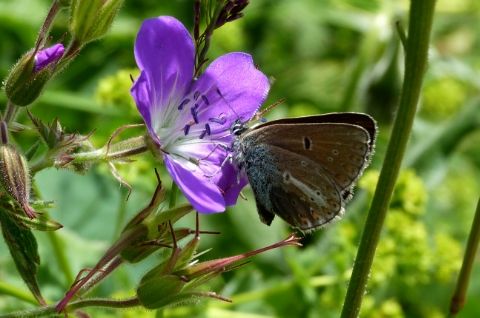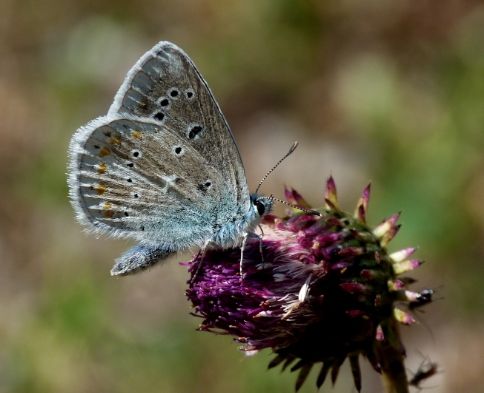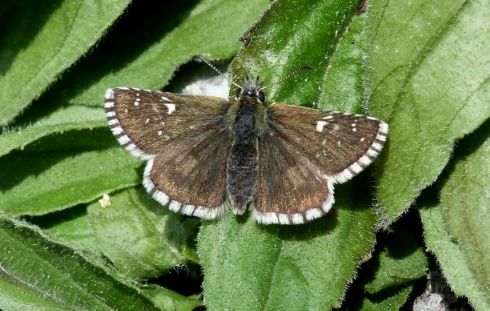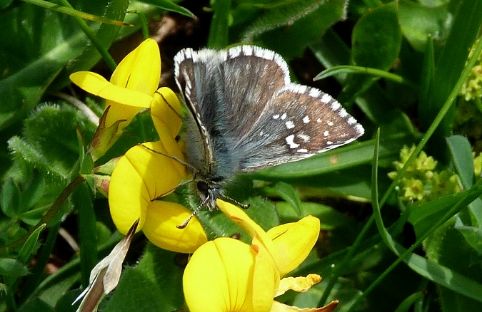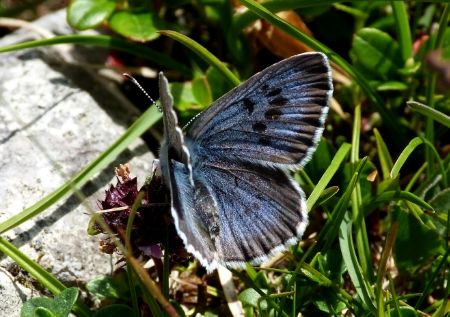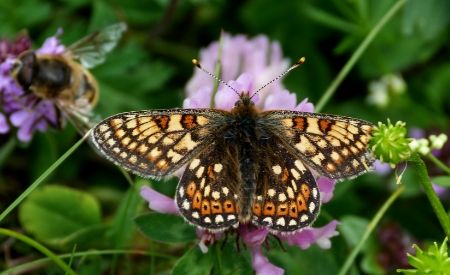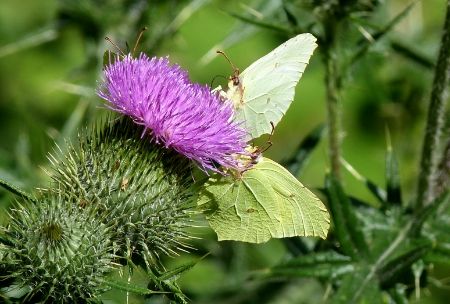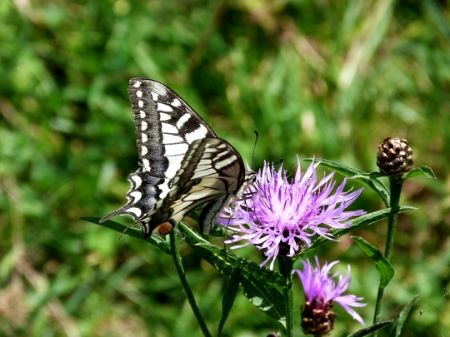On my final full day I decided to visit the mountain lake called the Zireiner See which lies at 1799m on Sonnwendjoch just north of Kramsach.
Forgetting about the butterflies for a moment, this was a lovely panorama in its own right:
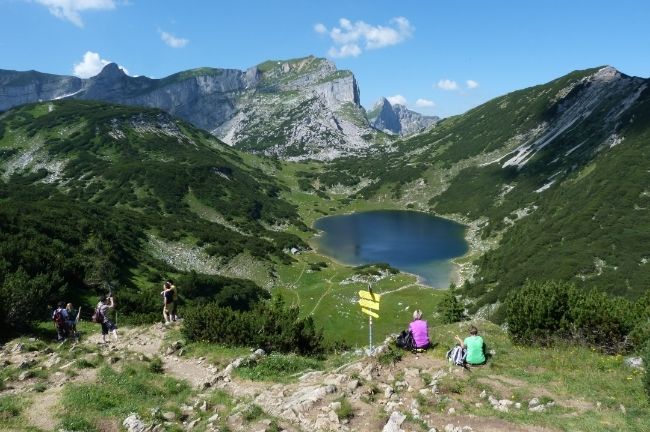
I didn't actually go down to the 'see'side because the habitat looked poor for lepidoptera. Instead, I concentrated on the higher slopes at about 1950m. There were plenty of species at this altitude including the following fritillary:
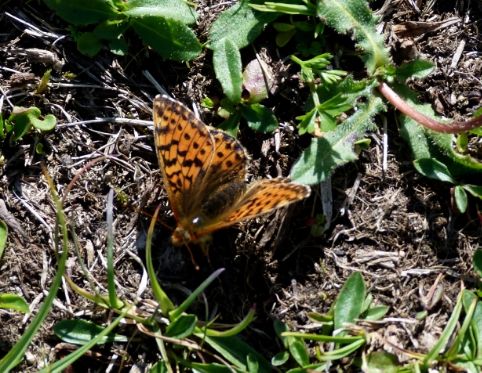
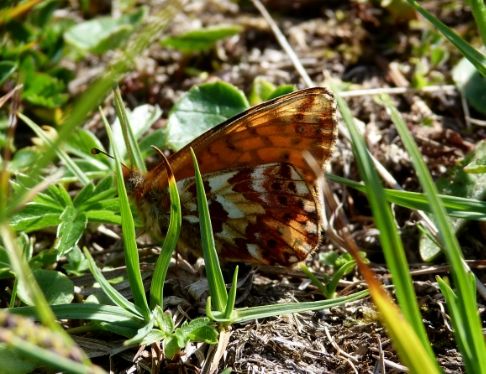
Slightly smaller than a SPBF, this species was fairly common, but they were difficult to approach, meaning that photos were at a premium. I stand to be corrected, but I think this is Shepherd's Fritillary
boloria pales.
This is where I saw the large numbers of
melampus. The terrain was very different from the upper slopes of the marshy Wiedersbergerhorn. This site was very rocky, full of outcrops of what seemed to be shale, and much drier looking.
I managed to get an underside of another fritillary, and being inexperienced in montane species, I have to say I think there's sufficient difference in this butterfly's appearance to suspect it might NOT be yet another example of
pales...what IS it though (surely the only other candidate is
aquilonaris?)
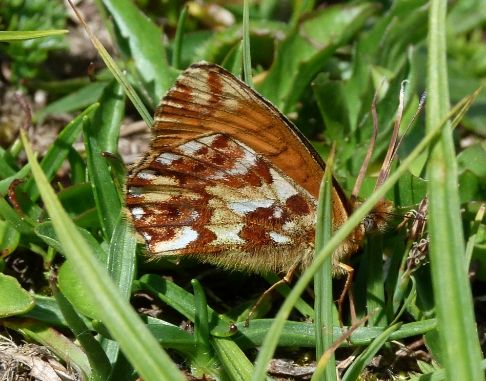
Lycaenids had been conspicuous by their absence all week, so when this one settled readily I zoomed in:
Mountain Argus -
aricia artaxerxes allous?
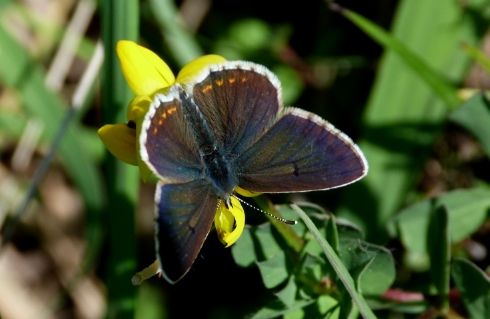
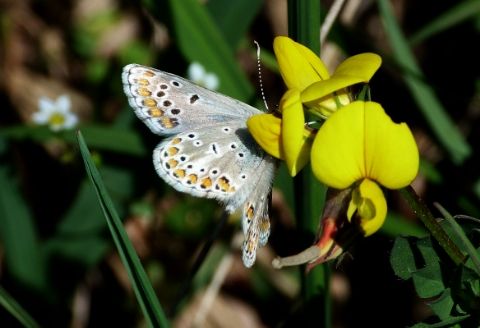
A familiar
erebia from the Pyrenees then made an appearance. Strange how this species was absent from Wiedersbergerhorn yet commonplace on Sonnwendjoch, just 15km away:
Bright Eyed Ringlet -
erebia oeme

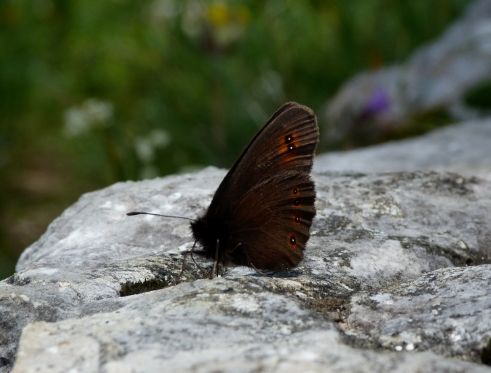
I have a question about this butterfly too. There were plenty flying about and they seemed to have much darker markings than the Moorland Clouded Yellows I saw on Wiedersbergerhorn. However, when I consult my guide, the message I'm getting is that this individual is more 'Moor' than Mountain:
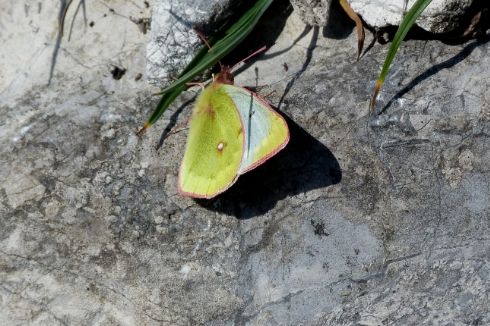
If it IS
palaeno rather than
phicomone then I've not worked assiduously enough, as I've seen the latter before and they're quite different in flight - the dark upperside veins are very noticeable and they were definitely present up here. Sadly, I may have taken my record shot of the wrong species.



